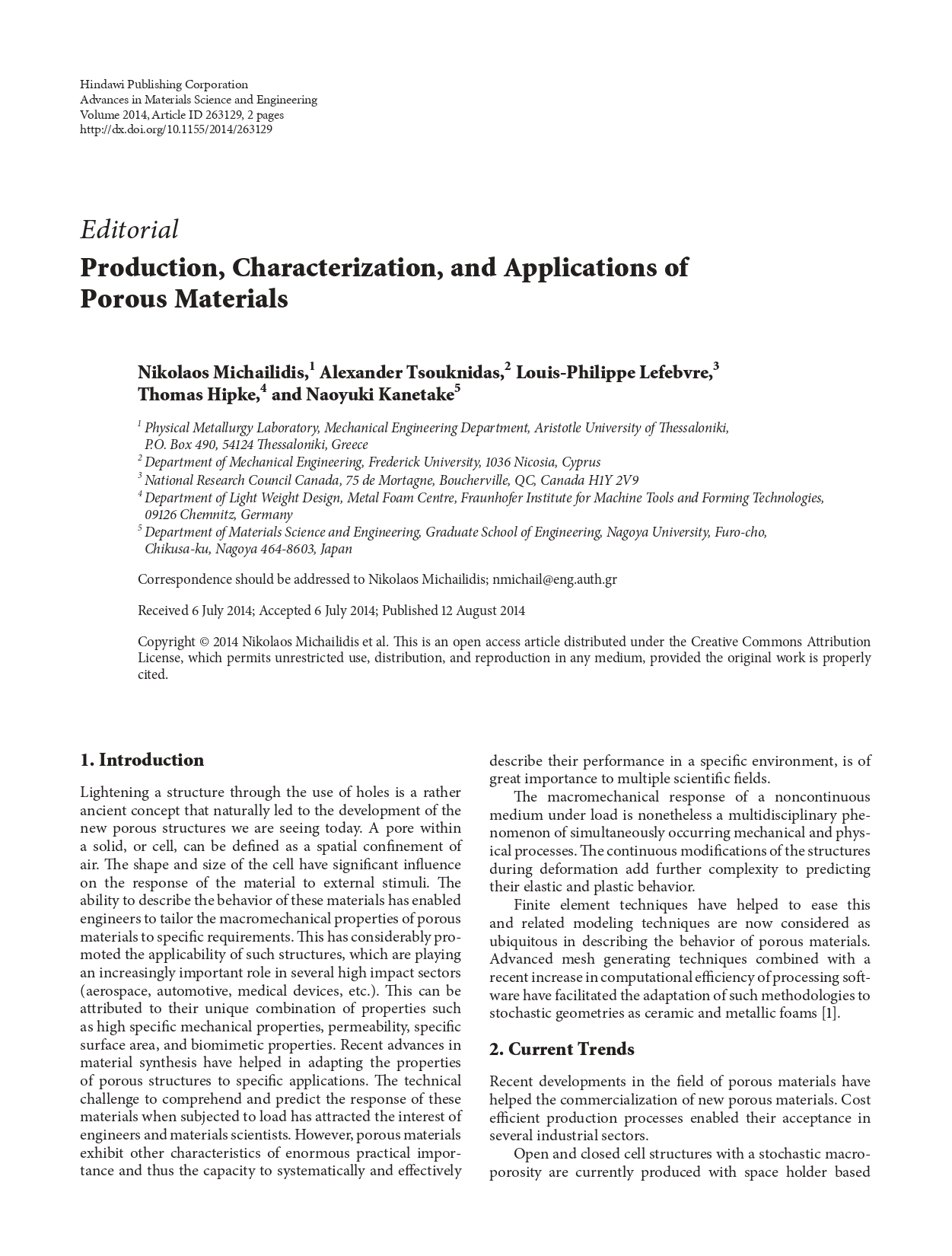Τitle
Production, characterization, and applications of porous materials
Production, characterization, and applications of porous materials
Advances in Materials Science and Engineering, 2014, art. no. 263129.
Lightening a structure through the use of holes is a rather ancient concept that naturally led to the development of the new porous structures we are seeing today. A pore within a solid, or cell, can be defined as a spatial confinement of air. The shape and size of the cell have significant influence on the response of the material to external stimuli. The ability to describe the behavior of thesematerials has enabled engineers to tailor the macromechanical properties of porous materials to specific requirements.This has considerably promoted the applicability of such structures, which are playing an increasingly important role in several high impact sectors (aerospace, automotive, medical devices, etc.). This can be attributed to their unique combination of properties such as high specific mechanical properties, permeability, specific surface area, and biomimetic properties. Recent advances in material synthesis have helped in adapting the properties of porous structures to specific applications. The technical challenge to comprehend and predict the response of these materials when subjected to load has attracted the interest of engineers and materials scientists.However, porous materials exhibit other characteristics of enormous practical importance and thus the capacity to systematically and effectively describe their performance in a specific environment, is of great importance to multiple scientific fields. The macromechanical response of a noncontinuous
medium under load is nonetheless a multidisciplinary phenomenon of simultaneously occurring mechanical and physical processes.Thecontinuous modifications of the structures during deformation add further complexity to predicting their elastic and plastic behavior. Finite element techniques have helped to ease this and related modeling techniques are now considered as ubiquitous in describing the behavior of porous materials. Advanced mesh generating techniques combined with a recent increase in computational efficiency of processing software
have facilitated the adaptation of suchmethodologies to stochastic geometries as ceramic and metallic foams
